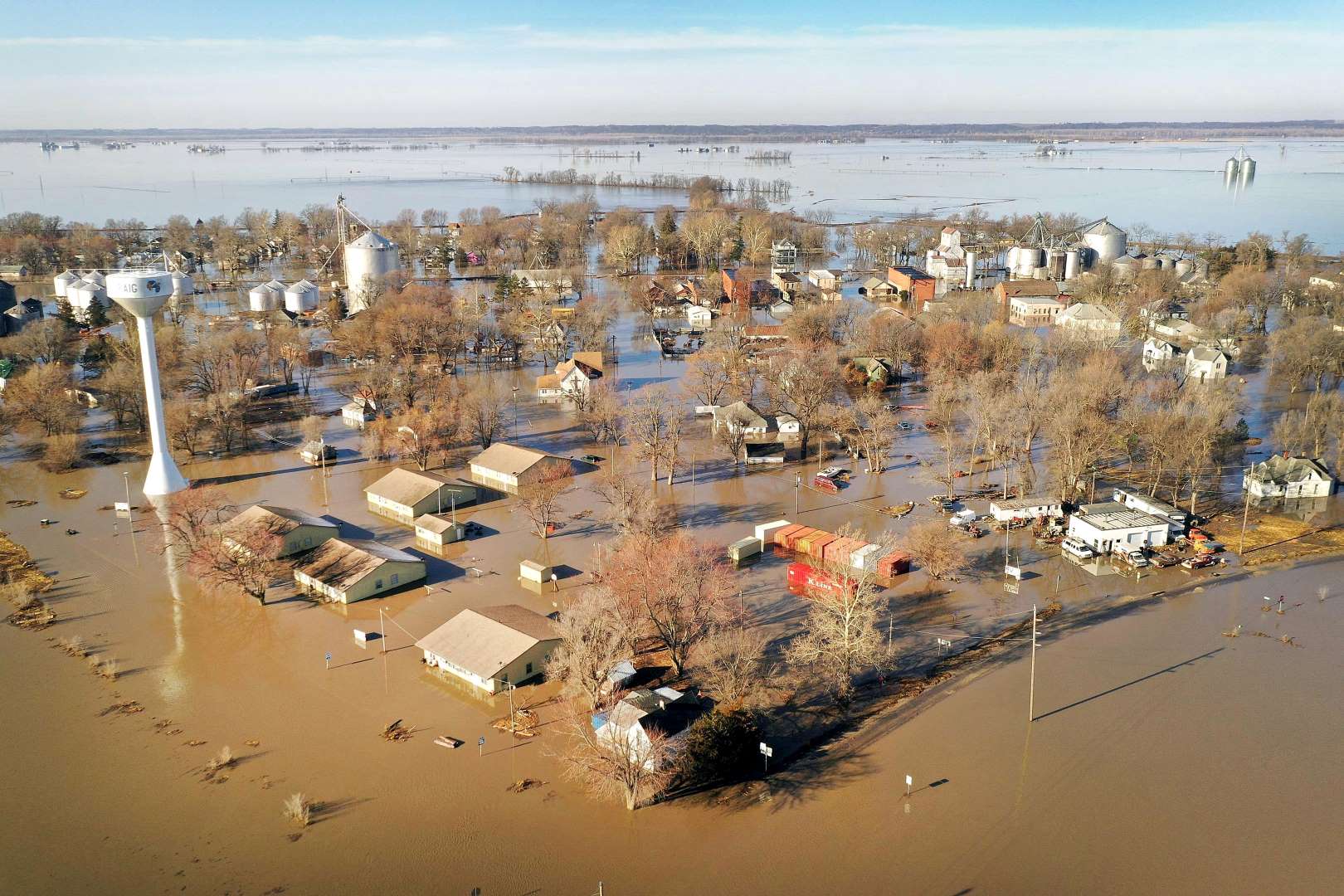
© Scott Olson/Getty Images Historic flooding, especially in Nebraska, has led to dangerously high water and rivers across several Midwestern states, hitting record-high levels in many areas. At least two deaths were blamed on flooding, and two other men have been missing for days.
A week after it began, major flooding continues to impact millions of people in states including Iowa, Missouri, Nebraska, and South Dakota.
The ongoing crisis began on Thursday, March 14, when the 90-year-old Spencer Dam broke in Nebraska, northwest of Sioux City, Iowa and Omaha. The dam rupture unleashed an 11-foot wall of water into the Niobrara River, a major tributary feeding the Missouri River. The dam was functional but under incredible strain, as are many other waterway system components in the region, due to the so-called bomb cyclone, a winter storm that dumped snow on Central and Northern Plains and Upper Midwest states in mid-March.
At least four people from Iowa and Nebraska are dead, and at least one person is missing in Nebraska.
The flooding is also particularly devastating to farmers in the region during a time of increased volatility due to President Donald Trump’s ongoing trade dispute with China, which have resulted in agricultural tariffs on corn, soybeans, and wheat. By the end of February, the U.S.-China trade war had already cost more than $40 billion in lost U.S. exports.

Reuters reports that many farmers were stockpiling corn in anticipation of prices rising as much as 10 cents a bushel, worth a potential few extra thousand dollars. But now, federal regulations require that some crops tainted by flood waters must be destroyed. That doesn’t even take into account the obvious losses of livestock and other agricultural products many farmers will simply be unable to recover. As of December, according to U.S. Department of Agriculture (USDA) data, producers in the flood-impacted states, as well as several other neighboring states, had 38% of the nation’s supply of corn, soybeans, and wheat stored on their farms, about 6.75 billion bushels total.
By Wednesday, more than three-quarters of Nebraska counties were under a state of emergency, and Anheuser-Busch pledged to send 100,000 cans of water to impacted communities. And on Thursday, Missouri Governor Mike Parson declared a state of emergency statewide as rising waters from the Missouri and Mississippi Rivers continued to threaten communities across The Show-Me State. With the Mississippi also threatening to rise in Southern states, Arkansas and Louisiana are bracing for possible disaster as well.
The devastating flooding across Midwestern states is likely a sign of more to come nationwide. On Thursday, the National Oceanic and Atmospheric Administration (NOAA) issued its 2019 Spring Outlook and predicted historic, widespread flooding will continue through the month of May.